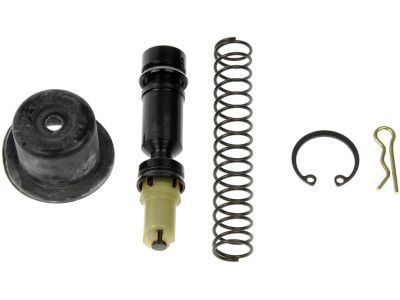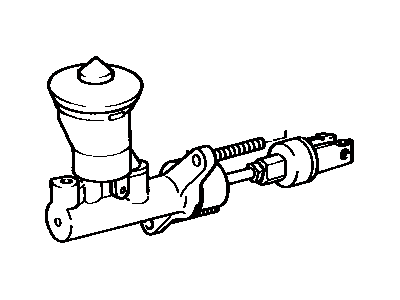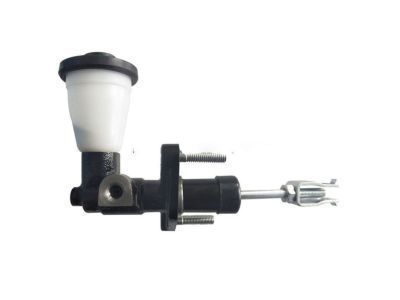×
- Live Chat
- 1-888-905-9199


My Garage
My Account
Cart
Genuine Toyota Camry Clutch Master Cylinder
- Select Vehicle by Model
- Select Vehicle by VIN
Select Vehicle by Model
orMake
Model
Year
Select Vehicle by VIN
For the most accurate results, select vehicle by your VIN (Vehicle Identification Number).
15 Clutch Master Cylinders found
Toyota Camry Cylinder Kit, Clutch Master
Part Number: 04311-12110$42.46 MSRP: $59.35You Save: $16.89 (29%)Ships in 1-3 Business DaysToyota Camry Cylinder Assy, Clutch Master
Part Number: 31420-20070$140.74 MSRP: $200.08You Save: $59.34 (30%)Ships in 1-3 Business DaysToyota Camry Cylinder Kit, Clutch Master
Part Number: 04311-12080$48.52 MSRP: $67.81You Save: $19.29 (29%)Ships in 1-3 Business DaysToyota Camry Cylinder Kit, Clutch Master
Part Number: 04311-12060$48.52 MSRP: $67.81You Save: $19.29 (29%)Ships in 1-3 Business DaysToyota Camry Cylinder Kit, Clutch Master
Part Number: 04311-60150$42.46 MSRP: $59.35You Save: $16.89 (29%)Ships in 1-3 Business DaysToyota Camry Cylinder Assy, Clutch Master
Part Number: 31420-33030$113.66 MSRP: $160.21You Save: $46.55 (30%)Ships in 1-3 Business DaysToyota Camry Cylinder Assy, Clutch Master
Part Number: 31410-33030$153.69 MSRP: $218.49You Save: $64.80 (30%)Toyota Camry Cylinder Kit, Clutch Master
Part Number: 04311-30080$63.94 MSRP: $90.14You Save: $26.20 (30%)Ships in 1-3 Business DaysToyota Camry Cylinder Assy, Clutch Master
Part Number: 31410-33011$158.97 MSRP: $226.00You Save: $67.03 (30%)Ships in 1-3 Business DaysToyota Camry Cylinder Kit, Clutch Master
Part Number: 04311-14031$52.67 MSRP: $73.62You Save: $20.95 (29%)Ships in 1-3 Business DaysToyota Camry Cylinder Kit, Clutch Master
Part Number: 04311-14030$52.67 MSRP: $73.62You Save: $20.95 (29%)Toyota Camry Cylinder Kit, Clutch Master
Part Number: 04311-32030$52.67 MSRP: $73.62You Save: $20.95 (29%)
Toyota Camry Clutch Master Cylinder
If you are in demand for superior quality and affordable OEM Toyota Camry Clutch Master Cylinder, then shop with us! We own a wide range of the reduced-priced genuine Toyota Camry Clutch Master Cylinder. You can purchase in confidence as all parts come with a manufacturer's warranty. Any issues with our products? No need to worry as we have a hassle-free return policy to guide you every step of the way.
Toyota Camry Clutch Master Cylinder Parts Questions & Experts Answers
- Q: How to remove and install the clutch master cylinder on Toyota Camry?A: To remove the components, first and foremost unclip the negative terminal wire from the battery followed by the separation of the power brake booster. In the engine compartment, remove the clutch reservoir tube clamp from the clutch master cylinder with pliers keeping in mind that some fluid will be lost; do not allow the brake fluid to touch the paint. Subsequently, take off the knee bolster and then detach the pushrod from the upper portion of the clutch pedal - disengage the pin together with the clip. Reach under the dash and unbolt the clutch hydraulic line using a flare-nut wrench since it is not advisable to round off the center and be sure to put a can and rags to contain any spillage of the liquid. The nuts on the master cylinder mounting has to be deloused and then the master cylinder together with gasket has to be taken out with extra precaution not to spill the fluid. During installation of the master cylinder, align the master cylinder to the pedal assembly and firewall and tighten the mounting nuts just enough with your fingers. Attach the hydraulic line to the master cylinder while making sure you do not cross thread the fitting. After that, tighten the mounting nuts to the desired torque and fasten the hydraulic line fitting. Replace the pushrod to the clutch pedal, fit the clutch reservoir tube in position and refill the clutch master cylinder reservoir with brake fluid that meets DOT 3 and then bleed the clutch system. Lastly, in order to carry out the completion of the installation process, follow the steps that were followed during the removal process in exactly the opposite manner.
Related Toyota Camry Parts
Browse by Year
2011 Clutch Master Cylinder 2010 Clutch Master Cylinder 2009 Clutch Master Cylinder 2008 Clutch Master Cylinder 2007 Clutch Master Cylinder 2006 Clutch Master Cylinder 2005 Clutch Master Cylinder 2004 Clutch Master Cylinder 2003 Clutch Master Cylinder 2002 Clutch Master Cylinder 2001 Clutch Master Cylinder 2000 Clutch Master Cylinder 1999 Clutch Master Cylinder 1998 Clutch Master Cylinder 1997 Clutch Master Cylinder 1996 Clutch Master Cylinder 1995 Clutch Master Cylinder 1994 Clutch Master Cylinder 1993 Clutch Master Cylinder 1992 Clutch Master Cylinder 1991 Clutch Master Cylinder 1990 Clutch Master Cylinder 1989 Clutch Master Cylinder 1988 Clutch Master Cylinder 1987 Clutch Master Cylinder 1986 Clutch Master Cylinder 1985 Clutch Master Cylinder 1984 Clutch Master Cylinder 1983 Clutch Master Cylinder
























